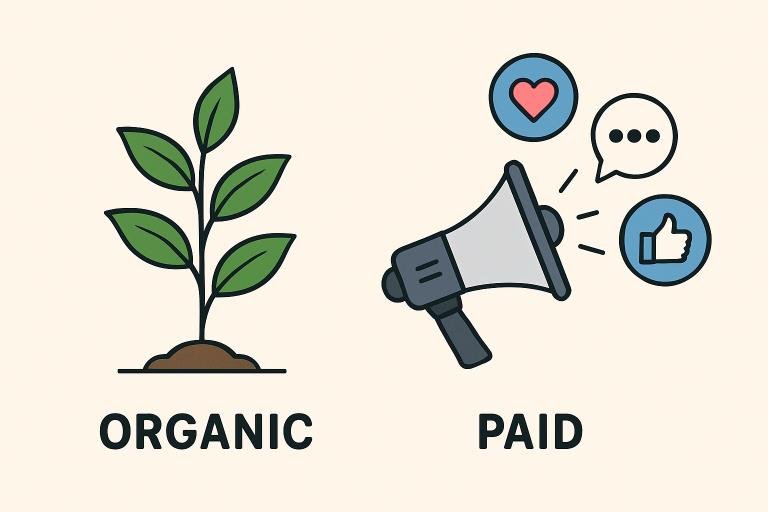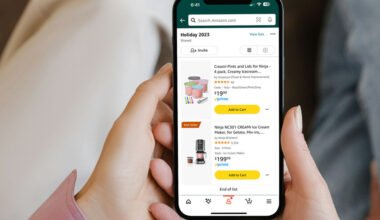Key Takeaways
- Understanding the differences between organic and paid social media strategies is crucial for optimizing return on investment (ROI).
- Organic social media builds brand authenticity and fosters community engagement over time.
- Paid social media offers immediate reach and precise targeting to achieve specific marketing objectives.
- A balanced approach, integrating both organic and paid strategies, often yields the best results.
The ever-evolving social media landscape demands that brands and marketers make informed choices on how to invest their resources for the greatest impact. For organizations weighing the merits of organic versus paid approaches, knowing when and how to use each is key to generating positive returns. If you’re looking to accelerate your efforts, collaborating with a proven Socialistics social marketing firm can help you uncover the right balance for your goals and maximize your marketing ROI from the start. Whether building lasting relationships or driving rapid results, both organic and paid social have unique strengths. Mastering the synergy between these tactics unlocks new opportunities and converts social platforms into powerful engines for growth.
Understanding Organic Social Media
Organic social media centers on creating, publishing, and sharing content without direct advertising spend. Posts, images, videos, live streams, and stories all contribute to your brand’s voice and presence on channels like Facebook, Instagram, LinkedIn, and Twitter/X. The ultimate goal of organic activity isn’t just visibility—it’s about nurturing authentic connections and increasing community engagement over time.
With algorithms increasingly favoring meaningful interactions, brands that emphasize conversation, address customer feedback, and consistently engage their followers often see stronger brand loyalty and advocacy. According to Sprout Social, actively engaging audiences fosters higher trust, which can translate into more organic growth and cost savings in the long run.
Understanding Paid Social Media
Paid social media empowers brands to amplify their message beyond their existing followers through targeted advertisements. From sponsored posts on Instagram to Facebook Ads and promoted tweets, paid campaigns utilize demographic, behavioral, and interest data to zero in on ideal customer profiles. This approach is particularly effective for campaigns requiring immediate or large-scale visibility, such as product launches, special events, or time-sensitive offers. Paid social also provides a competitive edge in crowded feeds and can serve as a powerful feedback loop, giving marketers precise metrics and analytics to guide future campaigns. Businesses are dedicating more of their budget to paid ads than ever before due to this direct pathway to measurable, scalable results.
Comparing Organic and Paid Social Media
While both organic and paid social media aim to increase brand awareness and drive conversions, their strengths and limitations differ:
- Organic social is ideal for building trust, cultivating long-term loyalty, and supporting brand reputation. However, its growth curve can be slow, and algorithms can limit reach to a small fraction of your audience.
- Paid social delivers velocity—providing immediate boosts in reach and traffic, and enabling agile targeting and retargeting. But, without strategic oversight, it can become costly, and the effect usually diminishes once ad spend stops.
The key is recognizing the role each plays in your funnel: organic nurtures, while paid accelerates.
Strategic Integration for Maximum ROI
Uniting organic and paid strategies maximizes the longevity and impact of your campaigns. High-performing organic content can be identified and amplified through targeted ad spend, extending its lifespan and reach to similar audiences. Insights gleaned from paid campaigns—such as click-through rates, conversions, and demographic engagement—can inform your organic content strategy, ensuring ongoing relevance.
Some brands leverage paid social to jump-start community growth and brand visibility, then scale back to focus on nurturing those relationships organically. Others continually blend both tactics, constantly optimizing based on performance data to ensure resources are used efficiently.
Case Studies and Real-World Examples
Local Retailer Success Story
A boutique retailer used organic Instagram posts to showcase behind-the-scenes content and gather feedback from loyal followers. For new product launches, brief paid campaigns target lookalike audiences who fit the same demographic and interest profiles as their current fans. This integration grew both reach and conversion rates, and engagement rates on organic posts improved from the paid boost.
Nonprofit Awareness Campaign
A nonprofit organization leveraged organic Facebook updates to tell authentic stories of impact while running targeted paid ads during fundraising drives. Not only did donations increase, but shares and comments on organic posts doubled, as new supporters stayed connected after first encountering the brand through paid campaigns.
Both examples illustrate the value of pairing authentic storytelling with data-driven promotion.
Best Practices for Social Media Marketing
- Set clear, measurable objectives for all campaigns, distinguishing between long-term brand goals and short-term promotional targets.
- Monitor analytics closely across both organic and paid initiatives using tools such as Google Analytics and native platform insights.
- Develop a unified brand voice and ensure consistency in messaging, visuals, and customer experience.
- Foster genuine engagement by responding to comments, sharing user-generated content, and prioritizing value-driven communication.
Staying attentive to changing trends and user behavior is crucial for ongoing success, as the social media landscape continues to evolve rapidly.
Conclusion
There is no one-size-fits-all answer when determining whether to invest in organic or paid social media. The most effective strategy aligns with your business model, resources, goals, and audience. By thoughtfully integrating both approaches, brands can foster authentic connections, achieve scalable outreach, and realize maximum ROI in a competitive digital world.



